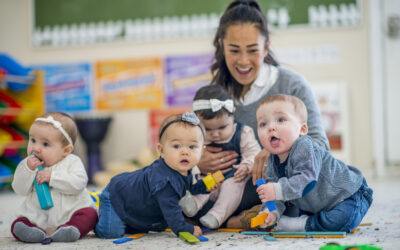Babies are born ready to learn. At birth, the brain contains about 100 billion neurons that are connected by synapses carrying electrochemical signals in response to stimuli from the world around us. During the earliest years, those synapses are firing at an astonishing rate, and they become the neural foundation upon which everything else is built.
By age 5, that neural foundation is largely in place, which is why the quality of our earliest experiences, interactions and relationships is so important. They are physically written into the brain architecture, and the strength of that architecture is what makes growth and acquiring a lifetime of skills possible.
We retain the ability to build synaptic pathways through our lifetime, but just as old habits are hard to break, the brain’s capacity to change decreases as we get older. It’s easier and more effective to influence a baby’s developing brain than to rewire parts of it later.
Powerful Lifelong Influence
Parents are their children’s first teachers, and they play a critical role in literally shaping the physical architecture of their child’s developing brain during the first five years of life. We have one truly blank slate only once in our lifetime, and during those early few years parents and caregivers have the opportunity to help create habits of learning, acting and reasoning without having to overcome what has come before.
The benefits of early positive experiences reveal themselves in the way young children acquire language, form healthy attachments and engage with the world around them. When children lack strong, supportive, positive early learning opportunities, the brain will wire itself to form other kinds of neural “habits” that are unlikely to contribute to lifelong success.
Serve-and-Return
A specific type of interactions with parents significantly influence children’s neurological development during the first five years. In this serve-and-return pattern, babies communicate with their parents and caregivers through babbling or gestures, and adults respond meaningfully with sounds, words, facial expressions and touch.
These simple interactions build synaptic connections in children’s brains, forming the foundation for future cognitive, social and emotional development. Parents who repeatedly engage in positive serve-and-return exchanges with their youngest children help build a strong neurological framework for the growth of healthy minds.


